Injury Control Research Centers
35 Year Anniversary Timeline

1987
- Congress appropriates $10 million to CDC to establish the first four academically based centers of excellence, currently called Injury Control Research Centers (ICRCs). The recipients were John Hopkins CIRP, UNC IRPC, HIPRC, and Harvard University.
- HIPRC collaborates with Dr. Arthur Kellermann and others to conduct formative studies on firearms examining the risk of firearms in the home and methods of safe storage.
- Dr. Patricia Waller and Dr. Carol Runyan create UNC IPRC. Dr. Waller becomes the founding director of UNC IPRC. Dr. Runyan serves as Director from 1989 to 2011.
1989
- HIPRC publishes A Case-Control Study of the Effectiveness of Bicycle Safety Helmets in the New England Journal of Medicine. The article is based on HIPRC’s study of the effectiveness of bike helmets and how to promote their use during their bicycle helmet program (1985-1989). HIPRC is the first to study this topic and their program served as the model for programs around the country. The program increased helmet use by children from 2% to roughly 70% in Seattle, Washington, with an accompanying decrease in head injuries from bicycling.
1990
- UNC IPRC and UAB work together to help establish the Southeastern Regional Injury Control Network (SERICN). SERICN is an injury prevention network. The SERICN members come from public health, transportation safety, consumer product safety, building codes and standards, and healthcare. States involved include Alabama, Florida, Georgia, Kentucky, Mississippi, North Carolina, South Carolina, and Tennessee.
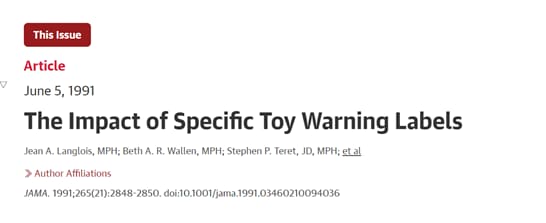
1991
- John Hopkins CIRP publishes The Impact of Specific Toy Warning Labels in the Journal of the American Medical Association. This research provided support for the use of clear, standard language on labels about choking hazards and age appropriateness on all toys with small parts sold in the United States.
- UI IPRC becomes the first center located in the midwest to serve Iowa, Missouri, Kansas, and Nebraska.

1992
- San Francisco and UCLA research informs California’s mandatory helmet law vehicle code section 27803. This law states a driver and any passenger must wear a safety helmet when riding on a motorcycle, motor-driven cycle, or motorized bicycle.
1993
- John Hopkins CIRP hosts first Summer Institute course on Principles and Practice of Injury Prevention. Students use class lectures in behavioral, biomechanical, environmental, epidemiological, legislative, policy, and community partnership approaches to injury prevention to develop and discuss strategies for addressing a specific injury problem.
1995
- UNC IPRC research informs North Carolina’s Smoke Detector law [PDF – 4 pages]. The law requires the installation of smoke detectors in every dwelling unit used as rental property, regardless of the date of construction of the rental property.
1996
- UI IPRC conducts the first Iowa Child Passenger Safety survey. This survey is conducted every year. UI IPRC has evaluated the trends over the last 14-15 years and found belt usage increased over this time period for all ages. They identified risk factors including rurality.

1997
- UNC IPRC and San Francisco host the Violence and Injury Control Education through Networking and Training (VINCENT), the first national telecourse on injury prevention for practitioners. The video-course broadcasted to over 180 sites, reaching nearly 2,000 viewers, and provided introductory training on community-based program development for those interested in initiating injury prevention activities. This course was made available worldwide as a free offering on the internet.

1998
- The Society for the Advancement of Violence and Injury Research (SAVIR) was established in 1998. UNC IPRC, John Hopkins CIRP, Colorado, Pittsburgh, and UI IPRC have been active members and in leadership roles for this organization since inception. SAVIR’s mission is to promote scholarly activity in the prevention, control, acute care, and rehabilitation of intentional and unintentional injury.
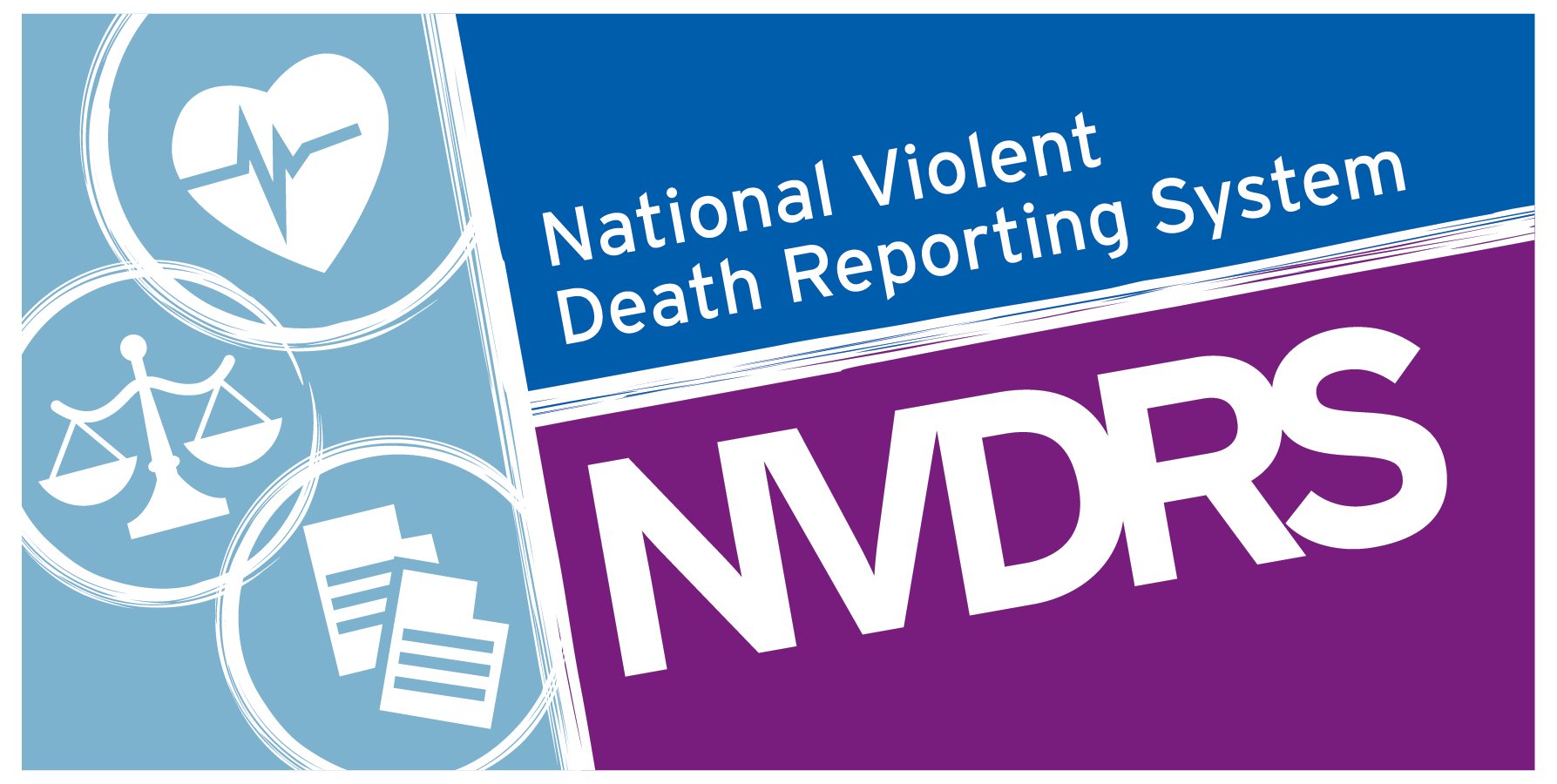
1999
- Harvard spearheads a multi-million dollar project to design and test the pilot for what is now the National Violent Death Reporting System (NVDRS). In 1999, in response to an Institute of Medicine report outlining the need for a national fatal intentional injury system, a pilot program called the National Violent Injury Statistics System (NVISS) was created. In 2000, the NVISS system was piloted at 12 sites (mostly universities) and was modelled after the National Highway Traffic Safety Administration’s Fatality Analysis Reporting System. Harvard University and the Joyce Foundation met and suggested that CDC direct a publicly funded system.
- UI IPRC creates UI College of Public Health in 1999 creating opportunities for students, new degree programs, and new faculty with interests in injury prevention.

2001
- John Hopkins CIRP Injury Control Certificate Program for master’s and doctoral students begins.
2003
- Pittsburgh releases the article, Guidelines for the acute medical management of severe traumatic brain injury in infants, children, and adolescents. These guidelines provide support for child safety restraint laws that become best practices in Transportation Safety.
2004
- UI IPRC research informs the Iowa child restraint law. Iowa legislature revised the requirements of the state’s child passenger safety law around booster seats and increased the age requirements for seat belt use in the back seat.
2005
- Harvard publishes report Safer, Self-Extinguishing Cigarettes Designed by Manufacturers Sold in NY, While Less-Safe Full-Burning Version Sold in MA & throughout U.S. New York was the first state to pass fire safe cigarette laws. All 50 states had fire safe cigarette laws in place by 2012.
2007
- John Hopkins CIRP receives the first National Injury Prevention and Control Health Impact Award from CDC. The National Injury Prevention and Control Health Impact Awards recognize efforts to achieve greater health impact in the field of injury prevention, promote best practices and success stories in the field of injury prevention and control, and demonstrate CDC’s commitment to achieving health impact.
- UNC IPRC research informs North Carolina’s Fire Safe cigarette law.

2008
- UI IPRC releases its first Burden of Injury in Iowa report.
- HIPRC develops database to identify trainee publications and maintain contact with alumni. Over 300 Harborview injury researchers were awarded more than $114 million in injury-related funding between 1995 and 2008.
- UAB develops two new injury epidemiology courses within the UAB School of Public Health.
- Nationwide CIRP research provides support for youth helmet law in Columbus, Ohio.
2009
- Harvard University’s ICRC director writes While We Were Sleeping: Success Stories in Injury and Violence Prevention. The book includes 64 documented injury prevention successes and 36 heroes of injury prevention from history, illustrating both programmatic and policy successes.
- Nationwide CIRP research leads to the American Society for Testing and Materials International revising its safety specifications for furniture tip-overs on chests, door chests, and dressers.
- Ohio expands its Child Passenger Safety Law to include booster seats informed by Nationwide CIRP’s research. The research shows that children who use a booster seat are 45% less likely to be injured in a motor vehicle crash than those using seat belts alone.
- UNC IPRC initiates development of statewide injury and violence prevention plan.

2010
- UI IPRC creates Steering Teens Safe, a parent-based teen driving program.
- UAB publishes The effect of state regulations on motor vehicle fatalities for younger and older drivers: a review and analysis. This article highlights the benefits of a Graduated Driver Licensing program. Researchers found reductions in crashes during restricted or curfew hours with 23 to 25% lower crash injury and fatality rates for curfews beginning before midnight.
- Nationwide CIRP helps pre-test and launch CDC’s Parents Are the Key national campaign to promote safe teen driving.
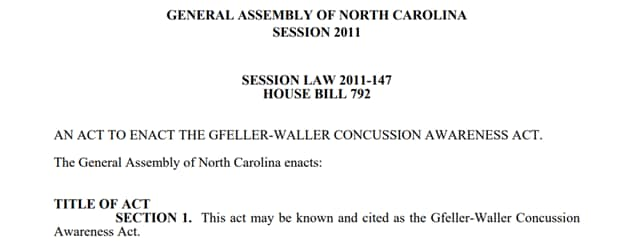
2011
- UNC IPRC’s research informs the Gfeller-Waller Concussion Act in North Carolina. This bill is designed to prevent head injuries in high school athletes. The research focuses on three major areas: education, emergency action and post-concussion protocol implementation, and return to play or practice following concussion.
- John Hopkins CIRP publishes the first edition of Preventing Injuries in Maryland: A Resource for State Policy Makers.
- HIPRC conducted an intervention pilot study to prevent children from falling out of windows. HIPRC discovered that case-control methodology can be used to study risk factors for pediatric falls from windows. HIPRC presented their findings at a regional conference on window safety with over 100 participants, including representatives from public health, advocacy, and business.
- Nationwide CIRP creates the Midwest Injury Prevention Alliance (MIPA). MIPA is an organization of injury professionals from the states in the Health and Human Services Region 7 (Illinois, Indiana, Minnesota, Michigan, Ohio, and Wisconsin) that work collaboratively to reduce unintentional and intentional injury-related death and disability.

2012
- UNC IPRC and North Carolina’s Department of Health and Human Services, Injury and Violence Prevention Branch create the Injury-Free NC Academy. The Injury-Free NC Academy is a training and program development resource for injury and violence prevention practitioners in North Carolina. Each cycle of the Academy focuses on a timely topic affecting North Carolinians.
- CDC’s Injury Center launches the “20 for 20 Project” as part of its 20th Anniversary celebration. The 20 for 20 Project pays tribute to the leaders and visionaries who have had a substantial effect on the field of violence and injury prevention. This project included seven current and previous ICRC directors:
- Susan P. Baker, MPH, John Hopkins University
- Andrea Gielen, ScD, John Hopkins University
- David C. Grossman, MD, MPH, University of Washington
- David Hemenway, PhD, Harvard University
- Ellen J. MacKenzie, PhD, John Hopkins University
- Frederick Rivara, MD, MPH, University of Washington
- Carol Runyan, MPH, PhD, University of North Carolina
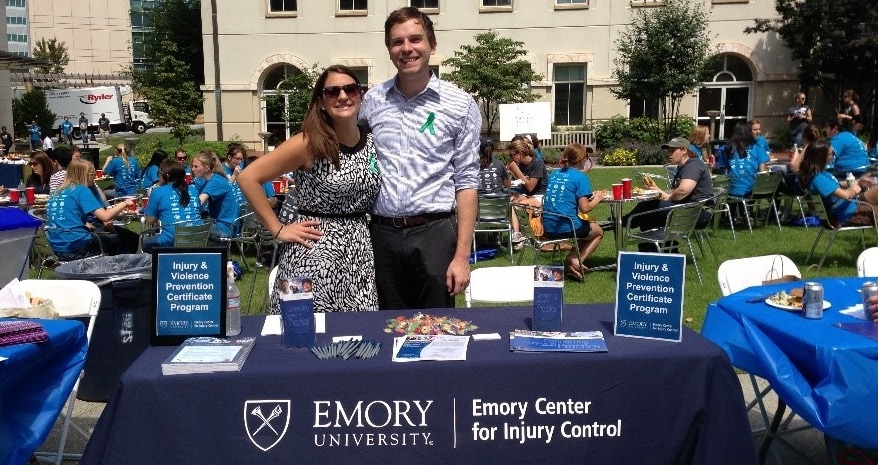
2013
- IPRCE launches their Injury and Violence Prevention Certificate Program. The course gives MPH and PhD students a foundation in theoretical and epidemiologic concepts of injury prevention and control.
- IPRCE and the Georgia Concussion Coalition research findings help inform the Return to Play Act (HB248). This requires public and private schools with youth athletic activities and public recreational leagues to provide information to parents on the nature and risks of concussion and head injury. The law also requires schools to establish a concussion management and return to play policy.
- Nationwide CIRP creates Prevent Child Injury to support the goals of the National Action Plan for Child Injury Prevention. Prevent Child Injury brings together a coalition of stakeholders to speak with one voice and share specific injury prevention messaging on a national level.

2014
- Deb Houry, MD, MPH, becomes the National Center for Injury Prevention and Control director at CDC. She served as the director of IPRCE, vice chair for Research in Emergency Medicine at Emory University School of Medicine and as Associate Professor at the Rollins School of Public Health before joining CDC. Dr. Houry also served as an emergency physician at Grady Memorial Hospital.
- CCISP implements CDC’s STEADI Healthcare Provider tools. Physicians, nurses, pharmacists, physical therapists, and other health professionals can find tools such as clinical resources, inpatient care, outpatient care, patient and caregiver resources, and provider training and education.
- CCISP’s Safe Routes to School program reduces injuries and saves lives. New York City implemented the program eight years earlier. CCISP conducted an evaluation and found a 44% reduction in injuries among children walking to school. This research, training, and outreach has provided support for policy changes and adoption of New York City regulations for better pedestrian safety.
2015
- WVU research shows that naloxone programs are successful in West Virginia. Policy makers use this research data to inform two key pieces of naloxone legislation. The first bill, Senate Bill 335, authorizes naloxone prescriptions to first responders and to active drug users and their family members, friends, and caregivers, and protects health care providers who prescribe them from liability. The second bill is a Good Samaritan law, Senate Bill 523, that provides limited immunity from prosecution for drug users and those who assist them with naloxone. Both bills became law in 2015.
- Mount Sinai implements a violence prevention program for juvenile offenders to reduce criminal offenses and violent crimes among youth offenders in Texas. They adapted their evidence-based cognitive rehabilitation intervention originally developed for adults with traumatic brain injury to a youth population.
- Nationwide CIRP conducted two studies that compared the medical risks and outcomes of exposure to laundry detergent packets with other types of laundry and dish detergents. They found the harmful effects of laundry packets were significantly higher. These findings informed the passing of the national Detergent PACs (Poisoning and Child Safety) Act of 2015 which required the U.S. Consumer Product Safety Commission to set mandatory safety standards for liquid laundry detergent packets.
2016
- CCISP’s Dr. Cassandra K. Crifasi, Keshia M. Pollack, and Daniel W. Webster receive the Jess Kraus Award for the paper Assaults against U.S. law enforcement officers in the line-of-duty: situational context and predictors of lethality published in Injury Epidemiology.
- Rochester advances public health approaches to suicide prevention. They conduct a bi-annual training to promote the study of public health approaches to suicide prevention. The four-day Research Training Institute equips injury and violence prevention professionals and researchers across the nation with information on suicide prevention science and research methods.
- U-M IPC reaches broad audiences with cutting-edge science. They sponsor a series of day-long summits to teach diverse audiences about significant topics in injury and violence prevention, such as sport concussions and prescription drug overdose. The summit focused on researchers, clinicians, practitioners, policy makers, and members of the media.
- CDC releases The Impact of Injury Control Research Centers: Advancing the Field of Injury and Violence Prevention [PDF – 36 pages]. This report describes key achievements from ICRCs annual and interim progress reports from 2012–2016.

2017
- CCISP’s Stanford Chihuri (right), Guohua Li (left), and Qixuan Chen receive the Jess Kraus Award for the paper Interaction of marijuana and alcohol on fatal motor vehicle crash risk: a case–control study published in Injury Epidemiology.
- PISC supports violence prevention through blight remediation. They studied the impact of low-cost repairs to abandoned buildings and vacant lot greening on residents’ health, safety, and quality of life. Areas around remediated abandoned buildings had a 39% drop in gun assaults, 19% drop in other assaults, and a 16% drop in nuisance crimes.
- HIPRC launches the Injury-related Health Equity Across the Lifespan (iHeal) symposium. The symposium features a national conversation about health equity – and what doctors, researchers, and academics can do about it.
- UI IPRC and partners evaluate an intervention for parents to improve supervision and communication with their teens who are learning to drive-particularly in rural settings. Participating teens reported a 21% decrease in risky driving.
- UNC IPRC addresses teen dating violence before it begins. Researchers at UNC IPRC designed Safe Dates, a teen dating violence prevention program for middle and high school students. Safe Dates tested the program in 14 public schools. The results showed a significant reduction in both perpetration of dating violence and victimization.
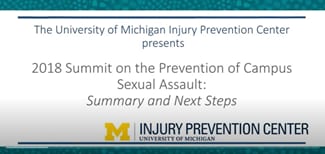
2018
- U-M IPC presents 2018 Summit on the Prevention of Campus Sexual Assault: Summary and Next Steps.
- John Hopkins CIRP improves helmet use among kids. They developed a 4-minute video to reach urban, minority youth who attend a pediatric primary care clinic. The video was part of a larger program that also provided a free bicycle helmet, a fitting, and instructions by a health educator. The one-month study showed helmet use was higher in youth reporting bike-riding after the intervention.
- PISC helps reduce concussions among college football players. Data analysis of more than 2,000 concussion cases showed that football kickoffs accounted for 6% of all plays but 21% of concussions in 2015 in the Ivy League. This research informed Ivy League football coaches who recommended new kickoff return rules. Several new kickoff rules were put in place for the 2016 and 2017 seasons. Further data analysis showed that the average annual concussion rate fell from 11 to 2 per 1000 kickoff plays after the new rules were put in place.
- John Hopkins CIRP pioneers autonomous vehicle collaborations in the U.S. They sponsored two symposia to launch a new initiative focused on the safe and equitable deployment of autonomous vehicle technology. Since the symposium, preliminary findings from the new research projects on autonomous vehicles have been presented to policy makers, industry groups, and safety regulators.
- Rochester and Colorado develop an innovative suicide prevention collaborative. The collaborative includes Colorado state and local policy health, policy and operational leaders, and other partners building and testing a comprehensive set of coordinated suicide prevention efforts statewide.
- UI IPRC joins the Promoting Resilience Initiatives (PRI) at the University of Iowa. They developed a six-course interdisciplinary undergraduate certificate program in Resilience and Trauma-Informed Perspectives that launched in 2018. The program tripled its enrollment by 2022.
- CDC releases Injury Control Research Centers Program Brief [PDF – 2 pages]. This document provides a brief overview of the program and highlights several Injury Control Research Center activities and achievements.
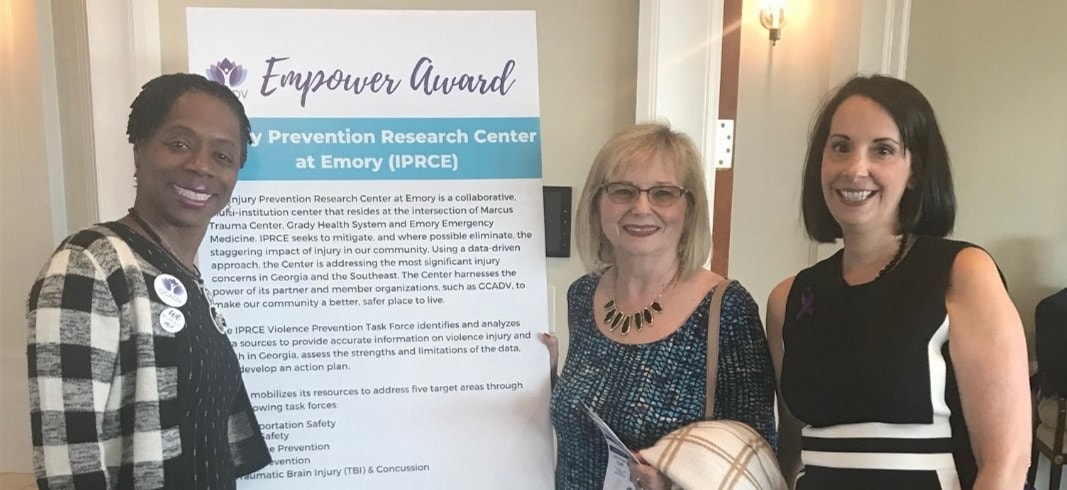
2019
- IPRCE receives Georgia Coalition Against Domestic Violence Empower Award.
- John Hopkins CIRP plays a critical role in developing the next generation of researchers and practitioners. They have graduated thousands of students at all levels of training, from undergraduate to post-doctoral since its creation in 1987. John Hopkins CIRP offers the most graduate courses in injury and violence prevention than anywhere else in the world.
2020
- A video UM ICRC and Core SVIPP: Partnering to Promote Safer Communities highlights the partnership between the Core State Violence and Injury Prevention Program (Core SVIPP) and the ICRC program in working together to implement and evaluate the Period of PURPLE Crying making important, lasting contributions to the injury field within Michigan.
- A video UNC ICRC and Core SVIPP: Partnering to Promote Safer Communities highlights the partnership between the Core SVIPP and the ICRCs working together to address suicide prevention in Appalachia.
- U-M IPC combats the opioid crisis in Michigan. They created an opioid overdose surveillance system. The system collects statewide Emergency Medical System naloxone administration data and medical examiner data from over 80% of the state’s population. U-M IPC uses the data to inform local planning, implementation, and responses to opioid overdoses.
- CCISP Injury Free Kids Coalition launches its first National Injury Prevention Day: November 18, 2020. The coalition brings together child injury prevention advocates, healthcare professionals, public health professionals, elected officials, and families to shed light on the need to address the burden of child injury in the United States.
- New York State implements rear seat belt law based on CCISP research and CDC’s Core SVIPP programmatic work. This law requires all people in a vehicle to wear a seat belt, no matter where they are sitting.
- UI IPRC enhances bicycle safety. They improved bicycle safety through programs, technology, and partnerships. UI IPRC outreach and training efforts in bicycle safety provided information to inform legislators and stakeholders on bicycle safety concerns.
- UI IPRC identifies suicide burden in Iowa. The rural United States has a suicide rate 45% higher than urban areas. UI IPRC collected and analyzed state-level data to produce an annual Suicide in Iowa This report summarizes the suicide data in their state and provides comparisons to national data. UI IPRC uses this report to educate Iowa legislators and stakeholders on the burden of suicide.
- Nationwide CIRP analyzes the effectiveness of concussion laws. They published these results in Research in Sports Medicine. The study showed an overall increase in concussion clinic visits after Ohio’s concussion law passed in 2013. These studies can inform policy interventions that can help optimize the use of medical care and reduce severe consequences of concussions in youth.
2021
- PISC creates a monthly Trainee Learning Lab. The lab is available for undergraduate and graduate trainees in Injury Science. Trainees meet virtually once a month to discuss and interpret peer-reviewed articles related to injury and violence research.
- HIPRC conducted its first evaluation of publicly available datasets for health equity research in injury and violence. They summarized data on suicide, falls in older adults, opiates, and non-lethal traumatic brain injury and identified hidden burdens in injury and violence prevention. This steps for research, training, and outreach in injury and violence prevention through a health equity lens.
- Nationwide CIRP creates Trainees for Child Injury Prevention. T4CIP is a group of trainees from across the country passionate about child injury prevention that develops outreach materials and strategies for national one-day campaigns.
- John Hopkins CIRP found in recent studies that state laws mandating ignition interlock use for all drunk driving offenders reduces fatal alcohol-involved crashes by at least 7%. Researchers estimate that interlock laws prevented 1,250 fatal crashes in states with mandatory interlock laws from the first implementation of the laws in 1982 through 2013.
- The COVID-19 pandemic impacts spark innovation among injury researchers. ICRCs found ways to successfully adapt and innovate to continue their core functions of providing research, outreach, and training. Many expanded virtual learning, explored new data systems, and embraced new technology to expand traditional research approaches.

2022
- U-M IPC recognizes the need for evidence-based, comprehensive training for the public health workforce. They developed a Certificate in Injury Science (CIS) for graduate students through the University of Michigan School of Public Health. The CIS program actively engages students in coursework and an internship practicum that enhances their knowledge and competencies in injury science.
- HIPRC develops the Injury Prevention Student Internship Training (INSIGHT) summer research program. The INSIGHT program prepares students for injury prevention careers. The goals are to create a pipeline for the next generation of injury prevention and treatment researchers and clinicians and to foster interest and growth in different types of public health expertise and the partnerships that public health convenes, supports, or facilitates.
- CDC releases The Impact of Injury Control Research Centers: Advancing the Field of Injury and Violence — An Update [PDF – 88 pages]. This report describes key achievements from the Injury Control Research Centers annual and interim progress reports from 2012–2019.
- Nationwide Children’s Center for Injury Research and Policy (CIRP) develops Trainees for Child Injury Prevention (T4CIP) to promote interest and engagement in child injury prevention. Medical students, residents, and fellows with an interest in pediatrics, child injury prevention, health behavior change, and communication can apply to become pediatric trainees in T4CIP. The program exposes them to public health approaches and community engagement to prevent child and teen injuries and violence.